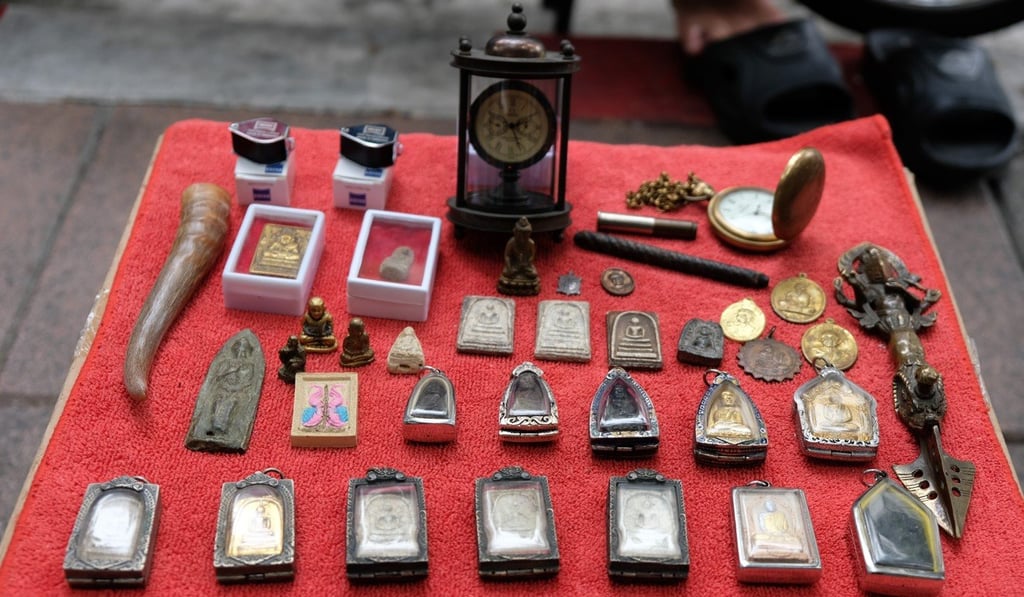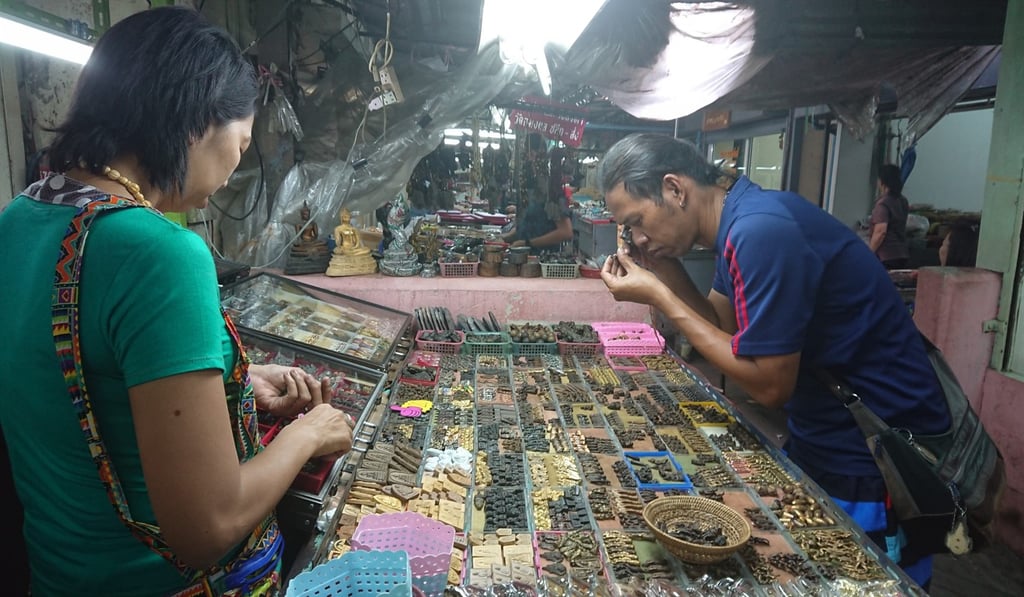World’s biggest amulet market: why Thais wear so many good luck charms, and why some cost so much
- US$1.25 billion worth of Buddhist charms are sold every year in Thailand – not surprising when seven in 10 Thais wear amulets. Some have thousands
- The most prized ones were made by venerated monks, but many are mass-produced, and unscrupulous temples pass off fakes as valuable charms to Chinese tourists

Jitti Kongsupapsiri reaches into his breast pocket and takes out a small, off-white object. It is encased in a shiny gold locket with curved glass panes on the front and back.
“Take a look at this,” the Chinese-Thai trader urges as he cradles the amulet gingerly in his palm, as if his very touch posed a danger to it.
There are good luck charms as far as the eye can see, and medallions, pendants and Buddhist trinkets. They are for sale at rickety stands, wobbly stalls and stuffy old shops, laid out in neat rows or jumbled up in plastic baskets.


The amulets come in a variety of sizes: little-finger size, thumb size, palm size. They are round, triangular, rectangular, oval. And they come in a range of materials: plastic, ceramic, base metals, silver, gold, jade. Some are limited-edition; most have been mass-produced for sale by enterprising Thais or financially astute Buddhist monks.